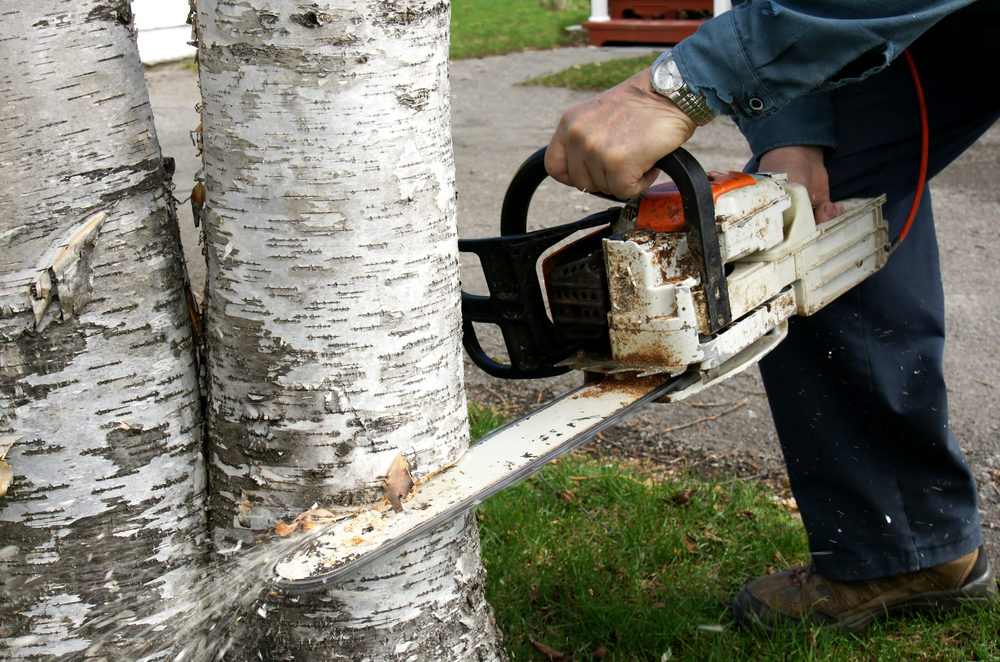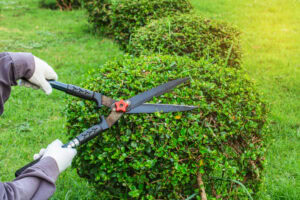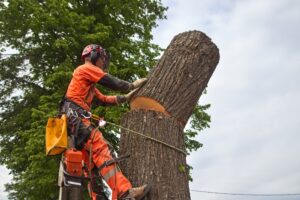Spotting the Red Flags for a Safer, Healthier Landscape
Significant Damage to the Trunk
The trunk is the backbone of your tree, providing the essential support it needs to stand tall and healthy. When a tree’s trunk is significantly damaged, it’s a clear indicator that the tree might be in trouble. Look for large cracks, deep splits, or significant areas where the bark is missing or dead. These signs suggest that the tree’s structural integrity is compromised, which can pose a risk not only to the tree’s health but also to the safety of your property and its occupants.
Additionally, a hollow trunk is a sign of severe internal decay. While a tree can live for years with a hollow trunk, it’s significantly weaker and more susceptible to falling during storms or high winds. If you notice any of these symptoms, it’s important to consult with a professional arborist from Green Light Tree Services. They can assess the damage and determine whether the tree can be saved or needs to be removed.
Fungal Growth at the Base of the Tree
The presence of mushrooms or other fungi growing at the base of a tree is often an indicator of root decay. Fungi thrive in decaying organic material, and their presence at the tree’s base suggests that the roots, which are critical for a tree’s stability and nutrient absorption, are rotting away. This decay can gradually weaken the tree from the ground up, making it unstable and a potential hazard.
Beyond the base, you should also check for fungal growth on the trunk and branches. This could indicate that the decay is widespread, affecting more than just the roots. When fungi are present, it’s crucial to have the tree inspected by professionals like those at Green Light Tree Services. They can determine the extent of the decay and whether the tree poses a risk to its surroundings, advising on the best course of action.
Dead or Drooping Branches
One of the more obvious signs that a tree may need removal is the presence of numerous dead or drooping branches. This condition, often referred to as “dieback,” signifies that the tree is struggling to provide nutrients to its extremities. Dead branches can fall at any time, posing a serious risk to people, vehicles, and buildings underneath. Especially if these branches are large, their sudden drop could cause significant damage or injury.
If more than just a few branches appear dead or the tree looks unbalanced with dying limbs, it’s a sign of deeper health issues. It’s important not just to prune these branches but to understand the underlying cause of the dieback. Green Light Tree Services can help diagnose the problem, providing solutions that might include treatment or, if necessary, removal of the tree to prevent further risk.
Leaning Tree
A slight lean in a tree isn’t always a cause for alarm, as many trees naturally grow at an angle. However, if you notice a sudden change in the angle of your tree, or if it starts leaning more noticeably, it’s a sign that the tree is losing its stability. This could be due to root damage, soil erosion, or other structural issues affecting the tree’s foundation. A leaning tree poses a significant risk, as it could topple over without warning, especially during severe weather.
When assessing a leaning tree, it’s also important to consider the direction of the lean and what lies in its potential path should it fall. Consulting with a tree care specialist from Green Light Tree Services is essential. They can evaluate the situation, determine if the lean can be corrected, or if the tree should be removed for safety reasons.
Close Proximity to Power Lines or Structures
Trees that grow too close to power lines or buildings pose a risk not only due to potential damage from falling branches or trunks but also because they can interfere with utility services. If branches are entangled in power lines, they can cause outages or become a fire hazard. Similarly, trees too close to buildings can damage roofs, windows, or foundations, especially during storms.
In these cases, trimming might mitigate the risk temporarily, but removal is often the safer, long-term solution. Before deciding, it’s best to consult with professionals like Green Light Tree Services. They can assess whether strategic trimming can resolve the issue or if removal is the safest option to protect your property and comply with local regulations.
Signs of Pest Infestation or Disease
Pest infestations and diseases can wreak havoc on trees, leading to irreversible damage if left unchecked. Common signs of infestation include visible pests such as aphids, borers, or webbing on leaves and branches. Additionally, diseases often manifest as discolored, distorted, or wilting foliage, as well as unusual growths like cankers or galls. These issues weaken the tree’s immune system, making it more susceptible to further damage and decline.
While some pests and diseases can be treated with appropriate measures, severe infestations or infections may necessitate tree removal to prevent the spread to nearby trees. Green Light Tree Services’ experienced arborists can accurately diagnose pest and disease issues, providing tailored solutions to protect your trees and landscape.



